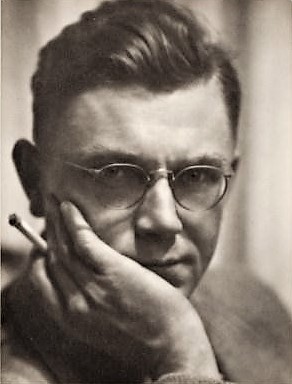Philip Henry Howard Surrey, known as Philip Surrey, was a renowned Canadian artist recognized for his symbolic depictions of Montreal. Born on October 8, 1910, in Calgary, Alberta, Surrey was the son of adventurer Harry Philip Surrey and Kate de Guerin, a relative of portraitist Richard Crosse, who taught him to read, write, and sketch.
Career and Recognition
A founding member of the Contemporary Arts Society and the Montreal Men’s Press Club (now Montreal Press Club), Surrey was a part of Montreal’s cultural elite during the late 1930s and 1940s. His first solo exhibition was held at L’Art Français (now Valentin Gallery) in Montreal in 1945. He also exhibited at the Montreal Museum of Fine Arts with John Lyman, Eric Goldberg, and Goodridge Roberts in 1949, with Louise Gadbois in 1949, and with York Wilson in 1955.
In recognition of his artistic achievements, he was elected to the Royal Canadian Academy of Arts, awarded a Canadian Centennial Medal in 1967, and was appointed to the Order of Canada in 1982. His work is featured in the collections of the National Gallery of Canada (Ottawa ON), Musée national des beaux-arts du Québec, Ottawa Art Gallery, and museums across Canada.
Artistic Style
Surrey was a figurative expressionist with an enduring interest in human subjects within urban nightscapes. His early work, painted during the Great Depression, often depicted solitary figures on street corners and in cafes or taverns. His work from the 1940s and 1950s is characterized by sombre colours, mysterious shadows, eeriness, and the loneliness and mystery of their subjects.
From the 1960s onwards, his work became more stylized and vibrant, often featuring young women or sociable urban dwellers as subjects. His expressive style and a poetic humanitarianism constitute a unique contribution to Canadian art. His Montreal street scenes convey an emotive vision of the modern city, with its anonymous crowds and individual solitudes.
Throughout his career, Surrey worked in watercolours, oils, ink, charcoal, as well as lithography, and his oeuvre also includes Canadian landscapes. His work is often described as a complex statement, packed with meaning, much like an iceberg where four-fifths of our personalities lie below the surface; of the fifth that shows, only part can be expressed in conversation.
FAQ About Philip Surrey
When and where was Philip Surrey born?
Philip Surrey was born on October 8, 1910, in Calgary, Alberta.
What are some of the recognitions Philip Surrey received?
Surrey was elected to the Royal Canadian Academy of Arts, awarded a Canadian Centennial Medal in 1967, and was appointed to the Order of Canada in 1982.
What is Philip Surrey’s artistic style?
Surrey was a figurative expressionist. His work often depicted human subjects within urban nightscapes, characterized by sombre colours, mysterious shadows, and a sense of loneliness.
What mediums did Philip Surrey work in?
Surrey worked in watercolours, oils, ink, charcoal, as well as lithography.
Where can I find Philip Surrey’s work?
His work is featured in the collections of the National Gallery of Canada (Ottawa ON), Musée national des beaux-arts du Québec, Ottawa Art Gallery, and museums across Canada.
What do you think of the works of Philip Surrey?
Use the form below to say your opinion about Philip Surrey. All opinions are welcome!
